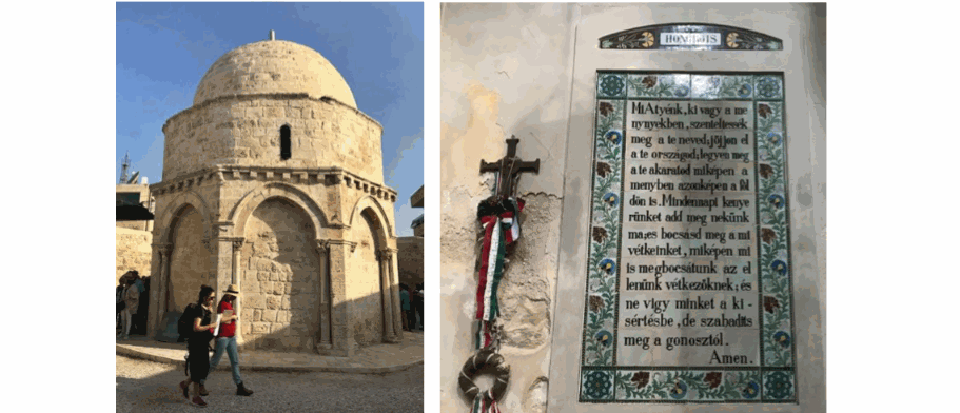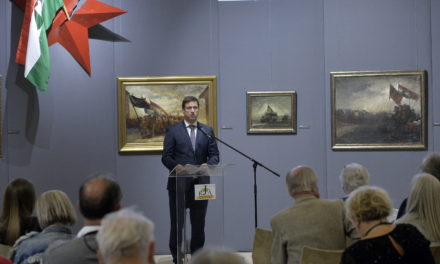Just like Christmas and Easter, Pentecost also has meaning and religious content. On the one hand, we need to determine the origin of the name Pentecost, and on the other hand, the message of the holiday. The Hungarian name of Pentecost comes from the Latin penta /öt/ and the Greek pentekosté /fifty/, considering that the miracle, the birth of Christianity, took place on the fiftieth day after Easter.
Accordingly, Pentecost is also a moving holiday, and depending on the day of Easter, it falls on the Sunday between May 10 and June 13. Pentecost is a two-day holiday, the days of which are Sunday and Monday. However, you should know that the holiday, like Easter, lasts for a week, but Saturday and Sunday are the two holidays indicated in the calendar.
(In the communist world, like all other Christian and national holidays, Pentecost was also tried to strip it of its content and cohesive force, to erase it from people's consciousness. Fortunately, not with much success. It is true that after the synodal reform, Pentecost Monday is no longer a separate church holiday, but many Christians is a public holiday in the country, so it has been in Hungary since 1993.)
At Pentecost, Christianity celebrates the outpouring of the Holy Spirit, which, in addition to the easily understandable history of Christmas and Easter, is more difficult to explain to the layman. In the Holy Scriptures, Acts 2,3 describes the fiftieth day after the resurrection of Jesus.
"And when the day of Pentecost came, and they were all together in the same place, suddenly there came from heaven a noise like a great gust of wind, and it filled the whole house where they were sitting. Then some tongues of flame appeared in front of them, which spread out and landed on each of them. They were all filled with the Holy Spirit, (Holy Spirit) and began to speak in different languages; as the Spirit gave them to speak.”
The New Testament describes how the Holy Spirit descended on the disciples on that day, which was promised to them before Jesus Christ's ascension. The Holy Spirit, full of love, enlightened, inspired, and taught the apostles, who then truly understood it, then became capable of fulfilling the missional command of Christ. As a result of Peter's teaching, many people were converted already in those days, and the early church in Jerusalem was formed from these believers.
John the Baptist already spoke about the coming of the Holy Spirit when he predicted that: "Jesus will baptize you with the Holy Spirit and fire." (Matthew 3:11)
It is known that Jesus was baptized in the waters of the Jordan River by Christ's cousin, Elizabeth's son, John. After that, a dove landed on Jesus, which dove has been the iconic symbol of the Holy Spirit ever since. We can see this in the Christian art representations that deal with the theme of Pentecost. In another wording, the result of the mutual love of the Father and the Son is the Holy Spirit, which is the end point, the outpouring of this divine love. This event filled the Christian believers' faith in God and Jesus with new content.
The vast majority of Hungarians - especially in the last three decades - think of Csíksomlyo when they hear Pentecost. This is understandable, since since 1990 Hungarians from the motherland have been making mass pilgrimages to the holy place of the Szeklers and Csángós, a place of worship known throughout Europe. Csíksomlyo was made famous by the miracle-working Mary statue made at the beginning of the 16th century. The 2.27 meter tall woman dressed as the Sun has the Moon under her feet and a wreath of 12 stars above her head. The queen has a crown on her head, a scepter in her right hand, and the baby Jesus in her left hand. Over the centuries, the many miracles and legends associated with the statue of Mary made the church of the Franciscans the center of interest of the Christian world. Among other things, it should be mentioned that when the Tatar leader wanted to topple the statue during the Tatar invasion, his arm became paralyzed.
When the church was set on fire, which happened several times, the statue survived the destruction unscathed each time. At the same time, he gave protection and courage to those praying at the statue and to the faithful gathered around him. Transylvanian bishop Ignác Batthyány recognized the statue as a miracle worker in 1798, which has continued to inspire faith and solidarity with the Hungarians of the Carpathian Basin ever since. Attacks on the statue of Mary continued in the 20th century. In 1916, the Madonna had to escape from the Romanians marching on Transylvania, and in the second half of the century, due to the persecutions of the communist system, the celebration of Pentecost was confined within the walls of the church. There are few countries in Europe where Pentecost, the holiday that embodies the birth of Christianity, receives as much status and attention as Csíksomlyó, one of the religious centers of Székelyföld.
Author: Ferenc Bánhegyi
Links:
- here you can find all Five Minutes of History for Young People ... topics so far.
- Attila Nagykirály Hotel Five minutes of history for young people ... Ferenc Bánhegyi
- 2022 plus on the website Five minutes of history for young people ...
- For Staying Hungarian Ferenc Bánhegyi Five minutes of history for young people...
In the picture above, the Church of the Ascension in Jerusalem, in which the prayer can also be seen with a Hungarian inscription (Author: Ferenc Fleischer)













